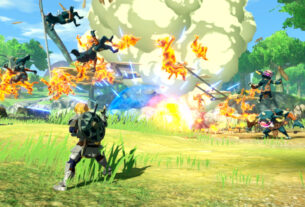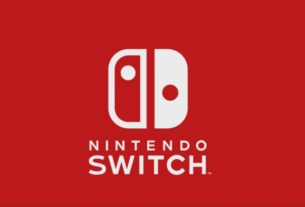
South of the Circle is a game I desperately want to play, though that’s not going to be possible for the time being. Why? South of the Circle is currently an iOS exclusive title for Apple Arcade. Designed by the award-winning developers’ State of Play, South of the Circle is proof that Mobile gaming still has some gems. Or, at least a gem. This isn’t a shameless time-sink designed to trick you into spending all of your money.
At least that’s the impression I get from everything I’ve seen and from the conversation I had with the developers. Normally, with a game that I’ve got no chance of playing right away, or if there’s nothing for me to complain about, you wouldn’t see me writing about it. That alone should indicate there’s something different about this. There is.
Let’s talk about what South of the Circle is first. It’s a narrative-adventure title set around the cold war and in Antarctica. You play as Peter who has crash-landed in Antarctica, and he is naturally attempting to escape his precarious position. As you advance through the story, attempting to escape the ice, you’ll find that Peter’s desperation sees more of his past encroaching upon him.
This past is primarily the relationship and romance between Peter and Clara, who you can see in some of the images attached to this piece. Of course, Clara isn’t there. The cold and the desperation is getting to peter, and things start merging in his mind. Maybe it will be obvious where reality ends, and fantasy begins, but Peter’s story looks like one to explore.
As for how the game plays out, how you interact with it, I’ll talk about that shortly.

For now, I’ve spoken about this being a mobile game that is different from the rest. I need to clarify why I’m saying this. It’s easy to say “it is” but there’s got to be a reason why. This is all about how South of the Circle has been built, the research that has gone into it, and more. Not everybody has the luxury of knowing somebody who has been to Antarctica – the developers at State of Play do Having spoken to this person, the head of the British Antarctic Survey in the 1960s, he was the person who explained how setting the game in the 1960s would be superior due to what was available at the time.
In their research, with people they were able to speak to, there is also a story about morse code that has reportedly made it into the game. This person had a man who, before having been sent to Antarctica, had been unclear about his health issues and then he started getting worse. Due to the resources available at the time, the way of sending information was limited. Morse code was used at the time to send out information of this person’s white blood cell count to a hospital in London. I don’t know if you know morse code, I know SOS, so I can’t imagine the tension of trying to send some serious information over that method.
A core part of the research of the team? Location. When you look at a studio like Ubisoft, the company and developers truly have the resources to go to the locations their games are set. That’s why you’ll find behind-the-scenes aspects showing trips to Peru (Ghost Recon Wildlands) or Washington DC (The Division 2). What you wouldn’t expect, or at least I certainly didn’t expect, is the developers of a mobile title venturing off to Antarctica.
That’s exactly what they did, and a lot of this on-site research made it into the game. From entering the caldera of a sunken volcano, steam rising on the sides of the water, to seeing how Antarctica is more than just white snow. Areas that are purely black ash, others where iron has started seeping up, turning the surface red and brown where iron has come up from the soil. While the studio has renamed areas, repurposed them for narrative reasons, the reality of Antarctica is something they have made painstaking detail to capture.
I did say “and more” when it comes to South of the Circle being a different breed of mobile game. With the development of Apple Arcade and even changing consumption habits, a premium mobile title can do well. During my chat with Luke Whittaker and John Lau of State of Play, Luke was quite right in pointing out what we do consume on phones and how it relates to premium and even narrative-oriented titles on a phone or tablet:
When we made a game, we’ve always found people want this kind of thing. I think people don’t necessarily want what’s out there on the mobile game space. It’s just there. The business model has forced it.
It doesn’t change the device; it doesn’t change how good that thing is for storytelling. In fact, we spend more time now than we used to on these devices, and why not? We consume Netflix, iPlayer and all sorts on here; we’re willing to have deep narrative experience on a mobile, on an iPad, and an Apple TV.
John followed up by saying this:
I think that’s kind of what’s interesting about it. Previous people were talking about phones, portable devices, where you would go for content on a train, on your commute, not necessarily in a different part of the house. I think like, this pandemic has shown that I certainly have changed how I use my device insofar as when I’m cooking, or something. Consuming drama, or content, or anything like that doesn’t have to be an occasion. There’s that space for that kind of experience in the house while you’re waiting for the pasta to boil or if somebody wants to watch something in the living room and you want a little alone time elsewhere; those are all valid use cases that we’re all experiencing.
It’s the aim of the game, the audience that really interests me. Too few games in the mobile space – frankly, even in the core gameplay space, actually look at anything in a detailed and in-depth look. It’s always fine for a developer to talk about how emotional a game is, how touching their story is going to be, how they want you to get attached to the game, the characters and the world. For every Hellblade: Senua’s Sacrifice and TellTale’s The Walking Dead, there are hundreds of games like Gears of War (No, I don’t care about Dom’s wife, nobody cares about her).
Not only is South of the Circle pushing forward as a premium mobile title, but it’s also one looking to bring a level of emotional investment almost unheard of on the platform, and it’s also looking to be accessible to everybody, expanding the potential audience. Luke covered this aim perfectly with just one part of the conversation we had:
We design, thinking about a wide audience as well. In terms of narrative experiences, often there are AAA games that are able to spend a huge budget on mo-cap, and all this, and create narrative experience. But, they’re often – probably for market reasons – quite narrow in what they address. Watch Dogs, all these things, they’re violent games that are not necessarily what everybody wants to see or play.
There’s a whole audience out there for dramas that look into relationships. This has somehow piqued the interest of the Antarctic explorer community – I mean, that is niche [laughs], but what I mean is that there were some who were like “this is really fascinating, I want to find out more about it”. We’ve designed this in a way that’s very accessible, you’re not asked to have incredible motor skills to get to the next section
So how does South of the Circle play? As a narrative adventure game, based on the platform the game is on, the way it’s structured is very different from how you’d expect. When asked, Luke and John stated that the game is between three to four hours, with the game structured in scenes that are each three to five minutes long. This allows for the pick-up-and-play nature that is valuable in mobile titles. If your pasta is boiling over or the house is on fire, you don’t need to worry, the most you’ll lose is maybe five minutes of the game.
While you are playing though, Luke and John can both foresee people playing this in very different ways. Somebody could simply binge through the three to four hours, experiencing the complete story. Others will enjoy the game in a piecemeal nature. Either way, there are going to be reasons to go back into the game through multiple choices in your response to a conversation or event.#
Unlike in games like Fallout, Elder Scrolls, Mass Effect – many of those types of game – you won’t be selecting a response by looking at the text of your response. There’s a level of ambiguity here with a system that is completely new, you will be selecting a response based on emotion rather than text. This was to avoid complications that can be found when you have multiple options, having to select in real-time from multiple options and how you feel about the specific dialogue. It also helps to remove issues where pieces of text can sound the same but you don’t know which is positive, which isn’t.
Here in South of the Circle, your response is dictated by the symbol you select. The symbol, as explained to me, won’t be a simple case of happy or sad. You may find that, in the words of John Lau:
one symbol can be explained by a group of words, it could be confident, forthright, domineering, you know, but it could also be arrogant. That general set of emotional concepts would cover one thing and that gives room for interpretation and hopefully, where we’re going with that, is to allow a player to take ownership of it.
This is slightly different to how a lot of games approach dialogue which is trying to give you different ways of approaching the conversation for the sake of having different versions. The emphasis is on having as much player choice as you can. What we’re doing here is saying “right, these are the two things this character is feeling at the moment”.
It’s not emphasising you being able to take the conversation in lots of different directions. It’s rather like, this person is feeling rather confident and domineering, but there’s also an element of self-doubt and self-loathing, which are you going to follow? That, I think, is informative of a character in an interesting way.
It should be made clear that this is very much an adventure game, it’s a directed story, though reportedly elements can change depending on your answers. The best way to explain is by looking at how elements of memories can change, you can remember things differently and you can also change your attitude to things that have happened. Two people could have an identical experience where one person sees it in a negative light, another in a positive.
The actors of these characters, fully mo-capped, were also pushed into embodying the characters as much as possible. To ask the questions about what happened to these characters in the past rather than, as Luke said to me, asking “should I put on my video-game voice”. From the work that has gone into the art design, the effort the studio has gone into through actually going on-location in Antarctica, there’s no doubt in my mind that this is a game with the same love and passion as any major titles you can find.
Now, if only I could play it. I would say that I’m thinking of ways around it, but let’s just leave that thought in the back for now. What I did ask is the potential of a release outside of the Apple ecosystem and this is something State of Play would like. As for right now, South of the Circle is out on Apple Arcade and will be for a time-limited period – that is as much as they could say, which is understandable. What I’m going to recommend is that you jump in and play it. Do something that I haven’t been able to. This is one of the very rare times that I’m envious as a quick search will show a great reception.



